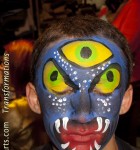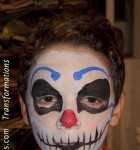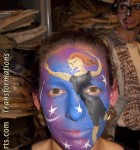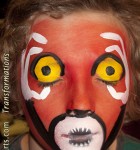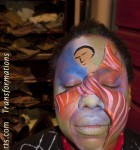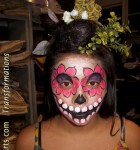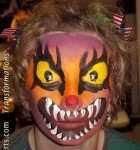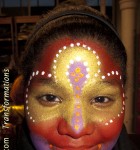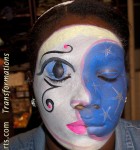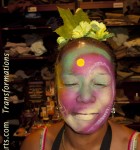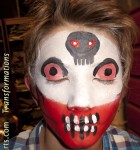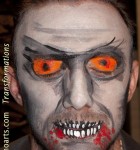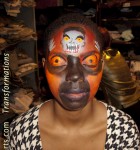
Insane Clown Zombie
Lorraine and I painted at one of our favorite annual events last night, the Halloween Party at Materials for the Arts. Their event grows each year, this year BD Wong was the master of ceremonies. We’ve been painting at this event for a while, which means many of the folks we have seen and painted before, like this young man who very much wanted to be scarier than his brother, so I made him into an Insane Clown Zombie.  At our annual New York events like this one, folks are familiar with the freedom and creativity we bring to each face and that encourages us to try new ideas, like this combination of a Monet color background with a dancing figure from an Andre Derain painting, as I continue to explore putting dancing figures on people’s faces. And I took the opportunity to do some “sketches” for faces I’ll be painting for a Dia De Los Muertos performance by Calpulli Mexican Dance Company on Nov 3 and 4 at Pace University’s Schimmel Center.
At our annual New York events like this one, folks are familiar with the freedom and creativity we bring to each face and that encourages us to try new ideas, like this combination of a Monet color background with a dancing figure from an Andre Derain painting, as I continue to explore putting dancing figures on people’s faces. And I took the opportunity to do some “sketches” for faces I’ll be painting for a Dia De Los Muertos performance by Calpulli Mexican Dance Company on Nov 3 and 4 at Pace University’s Schimmel Center.
 Continue reading
Continue reading
